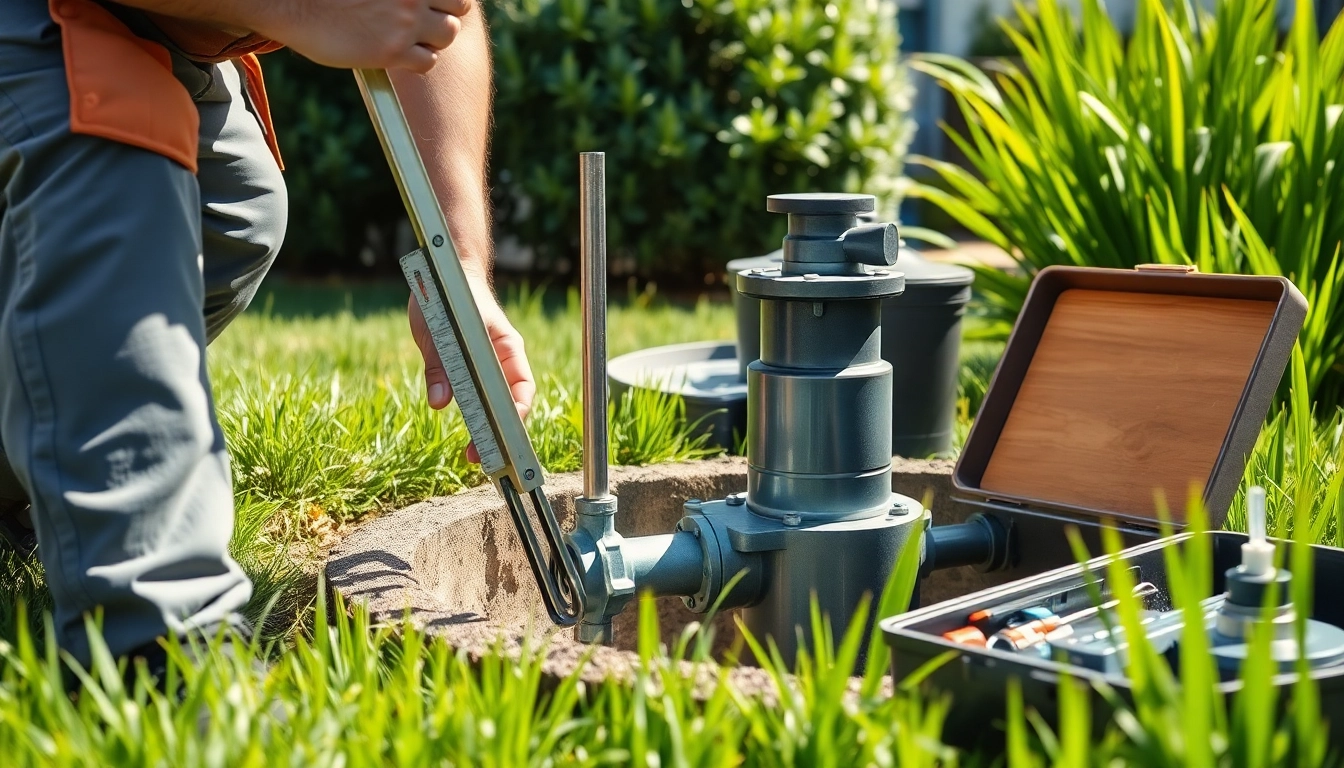Understanding Well Pump Replacement
Well pump replacement is a significant undertaking for homeowners, particularly those relying on well water for their everyday needs. As water supply systems age, their efficiency may decline, necessitating the need for replacement. Understanding the intricacies of well pump replacement can help homeowners make informed decisions throughout the process. From recognizing the types of pumps available, to identifying signs that a replacement is necessary, this comprehensive guide will lead you through each step of the well pump replacement journey, ensuring a seamless experience.
What is a Well Pump and Its Types?
A well pump is a vital component of a water supply system, primarily responsible for drawing groundwater from underground aquifers. These pumps are essential for households that rely on well water, as they help deliver water to taps, showers, and outdoor hoses. The two main types of well pumps are:
- Submersible Pumps: Fully submerged in the well water, these pumps are designed to push water to the surface. Their design enables them to efficiently draw water from deep wells, making them popular in areas where water tables are significantly deep.
- Jet Pumps: Typically situated above ground, jet pumps draw water using a suction mechanism. They are suitable for shallow wells where the groundwater is closer to the surface.
Why Well Pump Replacement is Necessary
There are several reasons why well pump replacement becomes necessary over time. A pump might fail due to wear and tear, corrosion, or mechanical failure. Additionally, changes in water quality or insufficient water pressure can indicate the need for a new pump. Concerns regarding energy efficiency, increased operation costs, and reliability also drive homeowners toward pump replacement.
Signs You Need a Well Pump Replacement
Recognizing the signs indicating the need for a well pump replacement is essential for maintaining a consistent water supply. Common indicators include:
- Declining Water Pressure: A drop in water pressure can signify that the pump is struggling to function effectively, resulting in insufficient water supply.
- No Water: If the pump is not delivering any water, it might be time to consider replacement, particularly if it’s not due to a power issue.
- Unusual Sounds: Grinding or unusual noises coming from the well can indicate mechanical issues within the pump.
- Frequent Cycling: If the pump frequently turns on and off, it could be a sign of a failing component, possibly leading to complete pump failure.
Cost Factors of Well Pump Replacement
The cost of replacing a well pump can vary greatly depending on numerous factors, including the type of pump, the depth of the well, and the local market rates for labor and materials. Understanding the cost components can help homeowners plan for this significant investment.
Average Cost of Well Pump Replacement
The average cost of well pump replacement typically ranges between $2,800 to $6,000, with most homeowners spending around $4,000. Several variables influence these costs, including:
- Type of Well Pump: Submersible pumps tend to be more expensive than jet pumps generally due to their design and the complexity involved in installation.
- Depth of the Well: The deeper the well, the more expensive the installation due to the additional materials and labor required.
- Labor Costs: Labor charges can differ by region. Obtaining quotes from multiple contractors can help in finding the right price.
DIY vs. Professional Well Pump Replacement Expenses
When considering well pump replacement, homeowners often face the choice between a DIY approach and hiring a professional. While going the DIY route may seem economical, it’s crucial to weigh the pros and cons. For instance:
- DIY Replacement Costs: The main expense here includes purchasing the pump, basic tools, and accessories. Note that homeowners should have some plumbing knowledge to tackle this effectively.
- Professional Installation Costs: Hiring a licensed contractor ensures the installation is done correctly. While this may involve higher upfront costs, it provides peace of mind and reduces the risk of future issues.
Hidden Costs to Consider in Well Pump Replacement
In addition to basic costs, there are hidden costs that homeowners should be aware of when replacing a well pump, including:
- Permits and Inspections: Many areas require permits for well pump replacements, leading to additional costs.
- Reinstallation of Well Components: If a pump replacement requires additional components, such as tanks or piping, these costs should be factored into the overall budget.
Steps to Prepare for Well Pump Replacement
Before beginning the replacement process, a few preparatory steps can streamline the experience. Being well-prepared can save time, money, and hassle later.
Choosing the Right Well Pump for Replacement
Choosing the right pump is crucial to ensure optimal performance. Here are key aspects to consider:
- Water Demand: Assess the household’s water consumption and select a pump that meets these needs appropriately.
- Well Depth: Understanding the well’s depth is essential to ensure the correct type of pump is selected (submersible or jet).
- Energy Efficiency: Select pumps with energy-efficient motors to reduce operating costs over time.
Assessing Your Current Well System
Before replacing the well pump, evaluate the entire system to identify any potential issues that may necessitate additional repairs or upgrades. Inspect the following:
- Condition of Piping: Check for leaks, corrosion, or other damage that may affect the new pump.
- Electrical System: Ensure that the electrical connections are safe and compliant with local codes.
Tools and Equipment Needed for Well Pump Replacement
Proper tools and equipment are essential for an efficient well pump replacement. Standard tools include:
- PVC Pipe and Fittings
- Wrenches and Sockets
- Pump Hoist or A-Frame
- Multi-meter for Electrical Testing
Well Pump Replacement Process
The actual process of replacing a well pump involves several steps that require both skill and safety awareness.
Step-by-Step Guide for Well Pump Replacement
Follow these detailed steps for an effective replacement:
- Shut Off Power: Disconnect electrical wiring to ensure safety during the replacement.
- Remove the Pump: Use a hoist to carefully pull the pump out of the well.
- Inspect Components: Check the pump and the surroundings for any signs of wear or damage.
- Install the New Pump: Securely attach the new pump, ensuring all connections are properly made.
- Reconnect Power: Once the system is confirmed secure, reconnect the electrical system and test.
Safety Precautions During Well Pump Replacement
Safety should never be overlooked during a well pump replacement. Key precautions include:
- Always wear protective gear such as gloves and goggles.
- Handle electrical components with extreme caution and ensure proper grounding.
- Be aware of your surroundings, particularly when using heavy equipment or hoisting techniques.
Common Challenges in Well Pump Replacement
Open communication and preparation can help mitigate challenges during the replacement process. Some common challenges include:
- Access Issues: Limited access to the well can make the job more difficult. It’s essential to plan for how to maneuver tools and equipment.
- Weather Conditions: Inclement weather can pose safety risks. Plan to conduct replacements during ideal conditions.
Post-Replacement Considerations
Once the replacement is complete, ongoing maintenance and monitoring are critical to ensuring the longevity and efficiency of the new pump.
Maintaining Your New Well Pump
Proper maintenance can significantly extend the life of your well pump. Tips for maintenance include:
- Regularly inspect the system for leaks or unusual noises.
- Conduct routine cleaning of components to prevent clogs or buildups.
- Monitor energy usage to identify inefficiencies early.
Monitoring Performance After Replacement
Post-replacement monitoring involves checking water pressure, flow rate, and water quality regularly. Recording these metrics can help identify future issues and ensure the system operates efficiently.
When to Call a Professional After Well Pump Replacement
Even after replacing a well pump, there may be instances where professional help is recommended:
- If the new pump does not perform as expected.
- When experiencing significant fluctuations in water pressure.
- In cases of unusual noises or electrical issues.
Understanding the process, challenges, and maintenance of well pump replacement can empower homeowners to make informed decisions regarding their water systems. For further assistance, consulting with an expert in well pump replacement ensures high-quality service and performance optimization.



